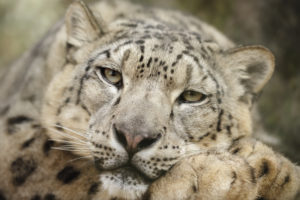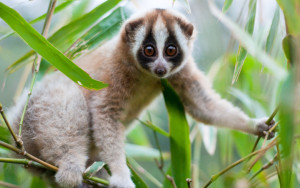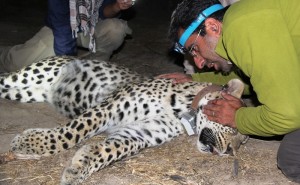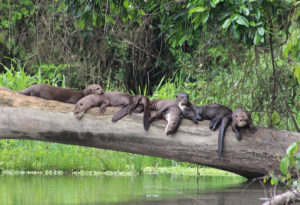Conservation Partnerships
Make your donationWhat is the problem?
Animals face extinction all over the world, and it’s almost always driven by the loss of their natural habitat. Animals are forced into smaller, isolated pockets of land and into ever-closer contact with humans. This makes life harder for them, as they struggle to hunt for food, find mates and breed successfully. Closer contact increases conflict between wildlife and people, often with catastrophic results. With so many species on the brink of extinction we must work harder than ever.
What we are doing?
We’ve created a Conservation Partnership Programme to support the very best conservation experts. We’re supporting four partners already, who are working tirelessly to save snow leopards, slow lorises, Persian leopards and giant otters –animals that are all in desperate need of help due to the effects of habitat loss.
 Snow leopards, Mongolia
Snow leopards, Mongolia
Conservation Partner: Bayarjargal Agvaantseren
Estimated population: Less than 10,000
Rampant mining is destroying the rugged mountainous snow leopard habitat of Tost, South Gobi. The leopards are also often killed in retaliation for killing domestic livestock. The area was declared a nature reserve in 2016, so Bayara can now work on making the area secure for snow leopards and their prey. Several mining companies have existing licences to work in the region. Bayara’s aiming to get them all revoked. And she’ll also be training rangers to prevent poaching. Then the mountains can return to being a safe haven for Mongolia’s wild animals.
 Slow Lorises, Java
Slow Lorises, Java
Conservation Partner: Professor Anna Nekaris
Estimated population: Less than 10,000
Having lost 90% of their tropical forests, exposed and vulnerable slow lorises are captured and sold illegally through the pet trade, for medicine or exploited as props in tourist photos. Traders cut out their venomous teeth, so even rescued animals can rarely be returned to the wild. Anna’s tackling the illegal wildlife trade head on, orchestrating a mass social media campaign to stop tourists posing with captured slow lorises.
 Persian leopards, Iran
Persian leopards, Iran
Conservation Partner: Dr Mohammad Farhadinia
Estimated population: Less than 1,000
Tandoureh National Park is a last remaining Persian leopard stronghold. The leopards are coming into increasing contact with local communities and pose a big threat to their livestock. So although the park is protected the leopards are still hunted, and their fur and bones are sought for the black market. Mohammad’s closely studying six collared leopards to see exactly where protection of the park boundaries will deter poachers. He’s also working with reformed poachers to better understand poachers’ motivations whilst teaching local communities how to better protect their livestock
 Giant otters, Peru
Giant otters, Peru
Conservation Partner: Adi Barocas
Estimated population: 180 – 400 in Madre de Dios, Peru
Giant otters, already hunted to the point of extinction for their fur, now face massive habitat loss from deforestation. On top of that 40 tonnes of mercury is being poured into the water every year as a result of gold mining. Adi will be educating locals about the risk mercury poses to people and wildlife He’ll also be measuring mercury contamination in otters and the fish they eat to see which areas need the most protection so otters can thrive again.
We must save animals from habitat loss

